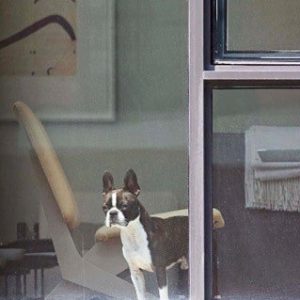You take a ‘happy snap’ of your neighbour, or her child, over the fence without their knowing? Is this OK in Australia? Do we need a new law around privacy?
Is secretly photographing people OK?
By Bill Rowlings, CEO of Civil Liberties Australia
If you photographed your neighbours over the fence, or across the air gap from your flat to their flat, would you be guilty of an invasion of privacy in Australia?
If you then put those photos online, or in an exhibition – identifiable, and with the neighbour’s address also able to be identified – would that break Australian law?
Most Australians would say “yes” it would. Or, at least, yes it should. But the legal picture is murky because there is no clear precedent of an established artist using such photographic “technique” to shoot images for a public exhibition.
In general in Australia, you have a right to photograph people and things in public places. But the law is not at all clearly defined, and there are exceptions. Inside next door’s house would be one, most likely.
In New York, a court has ruled the artiste photographer has such a right…but the court has said clearly the politicians should write a new law to do something about it.
An artist who hid in his apartment’s shadows and deployed a telephoto lens to photograph his neighbours through their glass-walled apartment, Arne Svenson, is not liable for invading their privacy, at the New York state appellate court ruled in April 2015.
The appeals court called it a “technological home invasion” but said the defendant used the pictures for art’s sake. Because of that, the First Department of the New York Appellate Division ruled last month in favour of artist Svenson, who snapped the pics from his lower Manhattan residence as part of an art exhibit called “The Neighbors.”

Some pictures, the court said, showed children’s “identifiable” faces: one of a boy in a diaper, another of a daughter in a swimsuit, and another of a mother holding that daughter.
The court said in its ruling:
“To be sure, by our holding here—finding no viable cause of action for violation of the statutory right to privacy under these facts—we do not, in any way, mean to give short shrift to plaintiffs’ concerns.
“Undoubtedly, like plaintiffs, many people would be rightfully offended by the intrusive manner in which the photographs were taken in this case. However, such complaints are best addressed to the Legislature – the body empowered to remedy such inequities
“Needless to say, as illustrated by the troubling facts here, in these times of heightened threats to privacy posed by new and ever more invasive technologies, we call upon the Legislature to revisit this important issue, as we are constrained to apply the law as it exists,” the court said. http://tinyurl.com/mghfwbt

